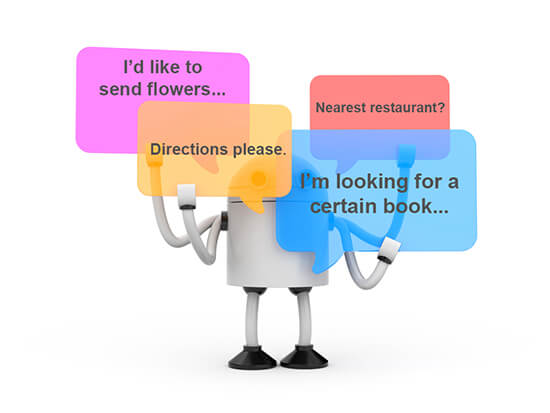Why and how chatbots will dominate social media
Since the early 2000s, brands have experimented with social media platforms and networks to communicate with customers and prospects — first through weblogs, then eventually through social networks such as Facebook and Twitter. Although the capabilities and sophistication have continued to evolve, at its core, social media has remained a platform to facilitate human-to-human communication.
But then the robots moved in.
Robots, though more specifically virtual robots or chatbots powered by artificial intelligence (AI), are transforming the way brands do business with their customers. Domino’s was one of the first companies to dabble in AI, allowing customers to order pizza by tweeting a pizza emoji to @Dominos. On the backend, a bot scans to confirm the tweet was not a hoax and processes the order.
More recently, Taco Bell unveiled its TacoBot within the Slack messaging platform that allows busy workers to chat with a bot to order a taco. And at Facebook’s F8, 1-800-Flowers, CNN, Spring — a retail shopping startup — and others released chatbots for Facebook Messenger. These bots offer new ways to shop, make purchases, read the news and more within the Facebook platform.
While all this sounds exciting, what does it actually mean for consumers, and what’s to become of the “humans” on social media?
Chatbots as the factotum for all business needs
The first thing to understand about chatbots is that most won’t introduce new capabilities; instead, brand chatbots will centralize where and how customers engage, using social media as an operating system.
Consumers will engage with bots in three ways: content consumption, customer service and productivity or transactional engagements. Social media is already part of many of these activities between brands and consumers, but social media acts as a gateway to direct consumers to the brand website, blog or separate channels. Instead of using social media as a portal, consumers can read and receive information, ask technical questions and even make purchases from one chatbot.
Take for example customer support. More than one-third of customers already prefer using social media rather than the telephone for customer support, and most consumers expect a response within an hour — if not faster. That’s a taxing load for brands, but the enhanced AI through chatbots makes it feasible to accommodate.
There is no doubt this bot-driven social media system is the future.
This won’t be the painful automated voice response for most phone customer service — which is good news since consumers are increasingly impatient with customer service. Chatbots will be able to quickly understand the contextual request or problem from the customer rather than force them through a series of selection menus to understand the problem.
Personalized to the context of your life
The second way consumers will benefit from chatbots is through personalization — and this is where social media plays a big part. Unlike the SmarterChild bot hosted on AOL Instant Messenger, the potential for bots is not just completing tasks you assign to it, but understanding the context of the user’s life. With Facebook integration, chatbots already have a rich data source to understand user habits around when they check their device, interests, most valued relationships and upcoming plans and schedule, so bots can deliver relevant updates, information and recommendations that are both location- and context-aware.
Many brands already target content on social media to specific audiences and locations, but there is no silver bullet currently to fully personalize what, when and how messages are delivered to customers. Even the current chatbots available on Facebook have room to improve in this department. Try using one if you haven’t yet, and you’ll receive a flurry of push notifications and updates from the bot to continue to share news and updates. But there is hope: Bots should get smarter with more human interaction, and will learn which information individuals really want, and when they prefer to receive it.
The future is now… almost
While there is no doubt this bot-driven social media system is the future, there is still need for improvements before the bots officially take over. Even beyond the need for improved contextual understanding of when to share updates, there is also no common language or intuitive way to initiate or end chatbot conversations.
Kinks aside, the good news is that artificial intelligence learns, and the more we all experiment — both brands and consumers — the better these tools will become. Although a PR disaster, Microsoft Tay was in some ways a success in demonstrating the incredible speed that AI can learn and adapt. (And also raised the need for brands to find ways to code against or prevent AI from learning unsavory and offensive language.)
Although bots are moving in, and likely to become mainstream within three to five years, humans will still have a place in social media. However, that too will change. As bots become equipped to handle text content, the human side of brands and consumers will gravitate toward new, richer ways to engage, including virtual and augmented reality. So despite the Hollywood horrors around bots versus humans, social media will remain — at least for now — a dual arena where both can coexist.
Article written by Cory Edwards. Cory is the director of Adobe’s social business center of excellence, responsible for the company’s social business operations and integration of social media.
0

